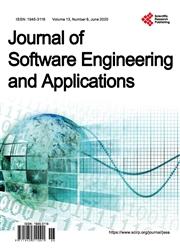A Fault-Based Testing Approach in Safety Critical Medical Systems
引用次数: 0
Abstract
The advent of technology has opened unprecedented opportunities in health care delivery system as the demand for intelligent and knowledge-based systems has increased as modern medical practices become more knowledge-intensive. As a result of this, there is greater need to investigate the pervasiveness of software faults in Safety critical medical systems for proper diagnosis. The sheer volume of code in these systems creates significant concerns about the quality of the software. The rate of untimely deaths nowadays is alarming partly due to the medical device used to carry out the diagnosis process. A safety-critical medical (SCM) system is a complex system in which the malfunctioning of software could result in death, injury of the patient or damage to the environment. The malfunctioning of the software could be as a result of the inadequacy in software testing due to test suit problem or oracle problem. Testing a SCM system poses great challenges to software testers. One of these challenges is the need to generate a limited number of test cases of a given regression test suite in a manner that does not compromise its defect detection ability. This paper presents a novel five-stage fault-based testing procedure for SCM, a model-based approach to generate test cases for differential diagnosis of Tuberculosis. We used Prime Path Coverage and Edge-Pair Coverage as coverage criteria to ensure maximum coverage to identify feasible paths. We analyzed the proposed testing procedure with the help of three metrics consisting of Fault Detection Density, Fault Detection Effectiveness and Mutation Adequacy Score. We evaluated the effectiveness of our testing procedure by running the suggested test cases on a sample historical data of tuberculosis patients. The experimental results show that our developed testing procedure has some advantages such as creating mutant graphs and Fuzzy Cognitive Map Engine while resolving the problem of eliminating infeasible test cases for effective decision making.一种基于故障的安全关键医疗系统测试方法
随着现代医疗实践变得更加知识密集,对智能和基于知识的系统的需求增加,技术的出现为医疗保健提供系统带来了前所未有的机遇。因此,更需要调查安全关键医疗系统中软件故障的普遍性,以进行正确的诊断。这些系统中庞大的代码量引发了对软件质量的严重担忧。如今,过早死亡的比率令人担忧,部分原因是用于进行诊断过程的医疗设备。安全关键医疗(SCM)系统是一个复杂的系统,其中软件的故障可能导致患者死亡、受伤或对环境的破坏。软件的故障可能是由于测试服问题或预言机问题导致的软件测试不足。测试SCM系统给软件测试人员带来了巨大的挑战。其中一个挑战是需要以不影响其缺陷检测能力的方式生成给定回归测试套件的有限数量的测试用例。本文提出了一种新的基于五阶段故障的SCM测试程序,这是一种基于模型的方法,用于生成结核病鉴别诊断的测试用例。我们使用Prime Path Coverage和Edge Pair Coverage作为覆盖标准,以确保最大覆盖率,从而确定可行的路径。我们在故障检测密度、故障检测有效性和突变充分性得分三个指标的帮助下分析了所提出的测试程序。我们通过在结核病患者的样本历史数据上运行建议的检测病例来评估我们的检测程序的有效性。实验结果表明,我们开发的测试程序具有创建变异图和模糊认知地图引擎等优点,同时解决了消除不可行测试用例以进行有效决策的问题。
本文章由计算机程序翻译,如有差异,请以英文原文为准。
求助全文
约1分钟内获得全文
求助全文

 求助内容:
求助内容: 应助结果提醒方式:
应助结果提醒方式:


